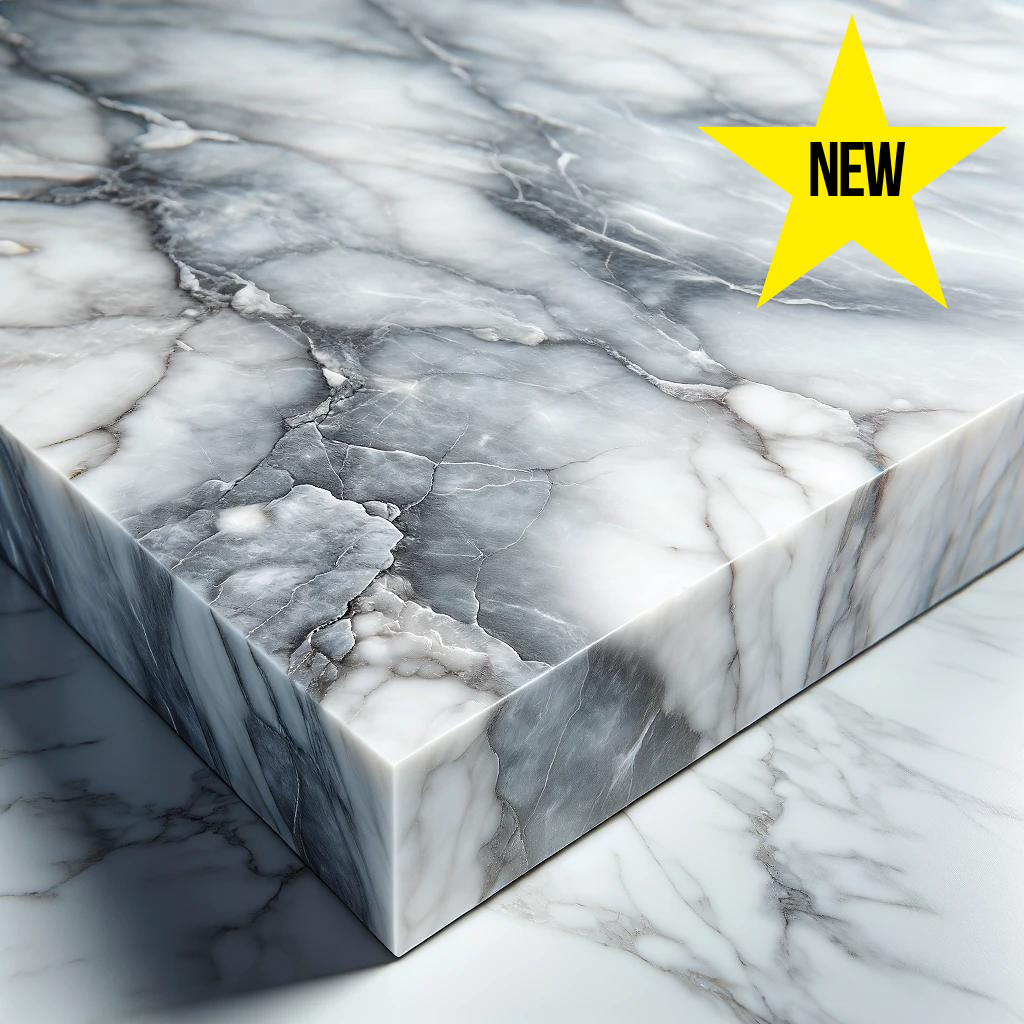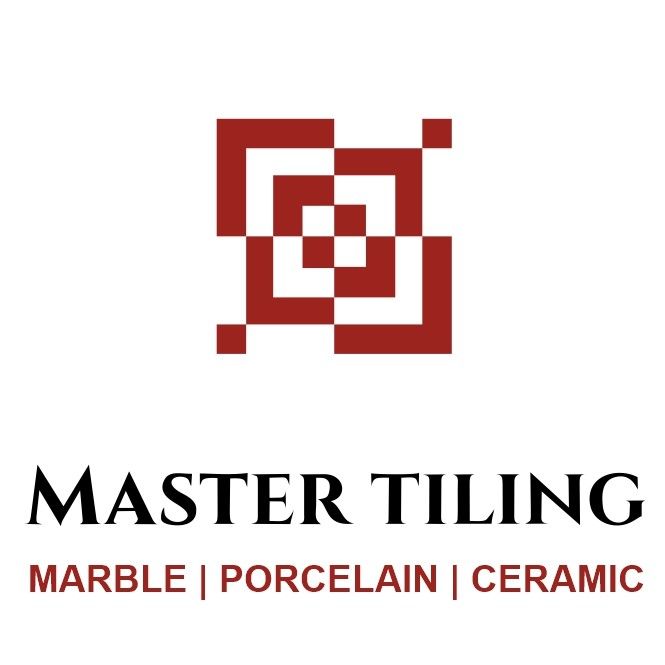Tiling Materials: Pros And Cons
1. Porcelain
Pros:
High durability and scratch resistance.
Low water absorption rate, making it ideal for bathrooms and kitchens.
Versatile in terms of design and available in a variety of finishes.
Cons:
Slightly pricier than ceramic tiles.

2. Stone-Effect Porcelian
Pros:
Mimics the elegant timeless look of stone.
Made from a new generation of 6mm large format porcelain, available up to 3.2m × 1.2m.
Easier to maintain as they don’t require sealing.
More durable and lighter than stone slabs, simplifying installation.
More affordable than natural stone slabs.
Edges can be polished, just like natural stone.
Cons:
Slightly pricier than standard porcelain tiles.

3. Ceramic
Pros:
Affordable and offers good value for the money.
Easy to cut, install, and maintain.
Available in a wide range of colors and patterns.
Cons:
Less durable than porcelain tiles.
More porous, making it less ideal for high-moisture areas.

4. Marble
Pros:
High-end, luxurious appearance.
Unique veining makes each tile one-of-a-kind.
Durable and maintains cool temperatures in hot climates.
Cons:
Requires more frequent maintenance to retain it's shine.
A pricier option.

5. Mosaics
Pros:
Great for creating intricate designs and adding visual interest.
Versatile in application, from backsplashes to shower floors.
Available in various materials, offering diverse aesthetic options.
Cons:
Complex designs require great expertise to install.

6. Glass
Pros:
Reflects light, adding brightness and depth to a room.
Resistant to stains, mould, and mildew.
Available in a wide variety of colours and translucencies.
Cons:
More fragile, prone to chipping or cracking.
Can be slippery when wet if used on floors.

7. Zellige
Pros:
Each tile is handcrafted, offering unique imperfections and charm.
Vibrant colours and glossy finish enhance the aesthetic appeal.
Adds a touch of artisanal elegance to spaces like bathrooms and kitchens.
The irregular, handmade quality provides a distinct, one-of-a-kind look.
Cons:
Can be more expensive than some other tile options due to their handcrafted nature.

8. Natural Stone
Pros:
Unique, natural appearance with no two tiles being exactly alike.
Adds value to the property.
Diverse range of options in terms of colour, texture, and type.
Cons:
Generally requires sealing to protect against stains and moisture.
Maintenance can be more demanding compared to ceramic or porcelain.

9. Terrazzo
Pros:
Highly durable and long-lasting, ideal for high-traffic areas.
Offers a wide variety of colours and patterns, allowing for custom design options.
Eco-friendly, often made with recycled materials.
Easy to clean and maintain, requiring minimal upkeep.
Cons:
Installation can be more complex and labor-intensive, requiring professional handling.

10. Travertine
Pros:
Natural, earthy appearance with unique patterns.
Durable and long-lasting when sealed properly.
Suitable for both indoor and outdoor applications.
Cons:
Porous nature requires sealing to prevent staining and water damage.
Requires more regular maintenance to maintain its appearance.

11. Limestone
Pros:
Provides a natural, rustic look.
Typically more affordable than marble or granite.
Works well in outdoor environments.
Cons:
Softer stone makes it slightly more susceptible to scratches and wear.
Exclusive colour range of mostly earth tones.

12. Granite
Pros:
Extremely durable and resistant to scratches.
Low maintenance and easy to clean.
Heat resistant, making it ideal for kitchens.
Cons:
Requires sealing to prevent stains.
Can be slippery when polished.

13. Quarry
Pros:
Very durable and ideal for high-traffic areas.
Natural, earthy aesthetic.
Slip-resistant, especially when left unglazed.
Cons:
May require sealing to prevent stains.
Can be more difficult to clean if the surface is textured.

14. Slate
Pros:
Naturally slip-resistant, making it ideal for floors, especially in wet areas.
Unique texture and colour variations.
Durable and suitable for high-traffic areas.
Cons:
Requires sealing to prevent stains and water damage.
Uneven surface texture can make cleaning more challenging.

